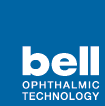Blindness can be one of the terrible effects of advanced diabetes. And while there are treatments, they are often invasive and painful. Researchers at Caltech are working on a new, gentler treatment in the form of glowing contact lenses.
When diabetics lose their vision, its because the disease damages tiny blood vessels in the eye, reducing blood flow to nerve cells in the retina, starving them of oxygen. The body compensates by growing new blood vessels in the retina, but diabetes often causes these to be imperfectly formed, damaging the retina. That damage is repaired via the growth of scar tissue instead of new nerve cells so the patient loses their sight.
Existing treatments center around reducing the retina’s oxygen demands, such as using a laser to burn away nerve cells in the peripheral part of the retina so the oxygen used by them can instead now be used by nerve cells in the retina’s more important central area.
Another approach involves giving the patient an injection in the eyeball, introducing medication that reduces the growth of new blood vessels.
Yet another approach uses lighted eye masks to illuminate the retina while the patient sleeps which causes the retina’s rod cells, which provide vision in low-light conditions, to remain inactive. Ordinarily, when we make things dark by closing our eyes, the rod cells become very active, consuming about twice as much oxygen as they do in bright conditions. Unfortunately, patients found the masks interrupted sleep as they saw flickers of light every time they moved their eyes.
That’s where the contact lenses come in.
Developed by a Caltech team led by graduate student Colin Cook, they incorporate tiny vials of tritium that emits electrons, which are converted into light by a phosphorescent coating. The vials are arranged on each lens in a ring, which lies outside of the wearer’s vision. When they shut their eyes and the pupil expands, however, the glow emitted by the vials is detected by the rod cells, keeping them from firing up.
“If we turn metabolism in the retina down, we should be able to prevent some of the damage that occurs,” Cook says.
In early tests of the lenses, they were found to reduce rod cell activity by up to 90 percent when worn in the dark. And unlike the lights in the sleep masks, the glowing vials in the lenses move with the user’s eyes, so they don’t see the sleep inhibiting flickers of light. The team now plans on conducting research to determine if that reduction in activity will result in the prevention of diabetic retinopathy.
